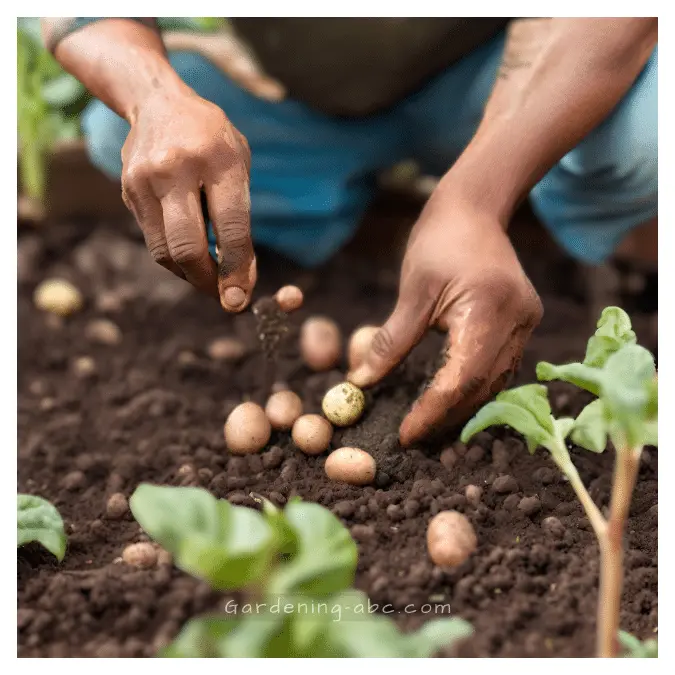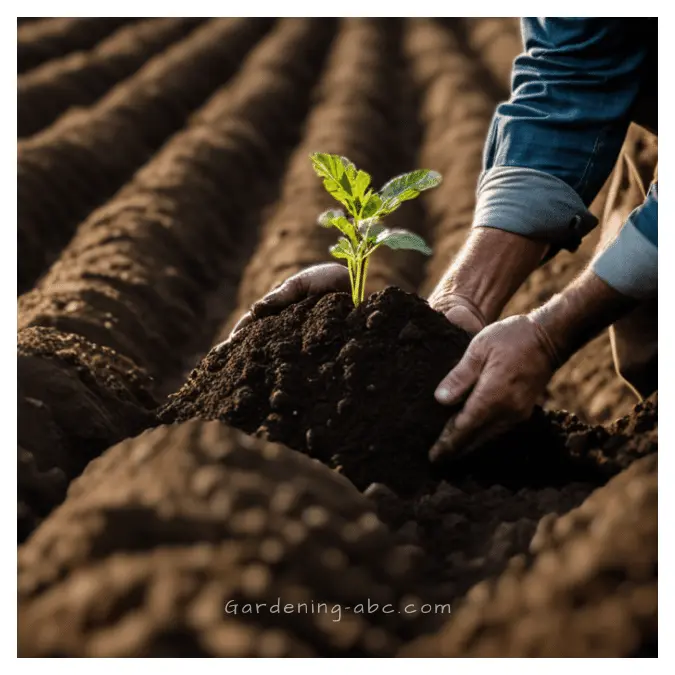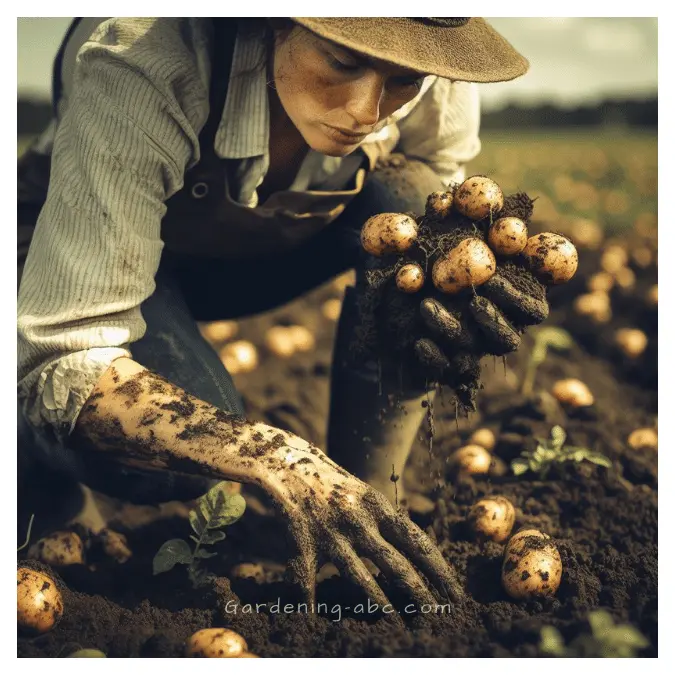We use affiliate links to run our site. When you buy through links on our site, we may earn an affiliate commission, without any added cost to you. Learn more
Have you ever wanted to grow your own potatoes in North Carolina, but weren’t sure when you should plant them? As a long-time gardener in the Tar Heel State, I used to struggle with this too. But after years of trial and error, I’ve nailed down the optimal planting times for hearty, delicious potato harvests.
In this post, I’ll share everything I’ve learned about exactly when to plant potatoes across North Carolina’s various growing zones. You’ll discover the best months to plant based on your local frost dates, along with tips to protect your crop from unexpected freezes. I’ll also recommend the top potato varieties that thrive in NC, along with soil prep and care instructions.
Curious about when you should get your potato crop in the ground? Read on for a complete guide to planting potatoes in North Carolina for your biggest harvest yet.
Overview of NC’s Climate
North Carolina has a humid subtropical climate, with hot summers and mild winters. The state has three geographic regions: the Coastal Plain, the Piedmont, and the Mountain region.
The Coastal Plain in eastern NC has warm weather that comes earlier in spring and lasts longer into fall. Piedmont in central NC has more dramatic seasonal shifts. The Mountain region in western NC has cooler weather and a shorter growing season.
To determine the best planting time, it’s important to understand your specific area’s last spring frost date and first fall frost date. The table below shows average frost dates for key NC cities:
| City | Last Spring Frost | First Fall Frost |
|---|---|---|
| Charlotte | April 6 | November 1 |
| Raleigh | April 3 | November 3 |
| Asheville | April 26 | October 17 |
| Boone | May 10 | October 8 |
The Best Tropical Plants That Thrive in North Carolina
When to Plant Potatoes in NC
Potatoes grow best with consistent soil temperatures between 55-75°F. They are sensitive to frost, which can damage young plants.
Based on NC’s climate patterns, I recommend planting potatoes:
- Coastal Plain: Mid-February to mid-March
- Piedmont: Mid-March to early April
- Mountains: Mid-April to early May
It’s best to plant potatoes 2-3 weeks before your area’s last expected spring frost. This gives plants time to establish before cold conditions arrive.
I don’t recommend planting any earlier than mid-February, even in coastal areas. Potatoes may sprout but soil temperatures will be too cool for vigorous growth.
If planted later than early May, potatoes may not reach full maturity before hot summer weather arrives.
Preparing the Soil

Potatoes need well-drained, nutrient-rich soil with a pH between 4.8-5.5. Here are some tips for preparing the soil:
- Test your soil pH and add lime if needed to reach the ideal range.
- Loosen the soil to a depth of 12 inches and mix in 2-3 inches of compost or rotted manure.
- Just before planting, create 4-6 inch tall ridges spaced 2-3 feet apart. This improves drainage and gives potatoes room to develop.
- Optional: Add a balanced organic fertilizer when planting. I use an all-purpose mix applied per package instructions.
Choosing Seed Potatoes

When planting potatoes, you’ll use “seed potatoes“, which are certified disease-free tubers. Look for varieties suited for North Carolina’s climate:
- Early season: Irish Cobbler, Red Gold
- Mid-season: Yukon Gold, Kennebec
- Late season: Russet Burbank, Purple Majesty
Purchase certified seed potatoes from local garden stores or reputable online retailers. Avoid using potatoes from the grocery store, which may carry diseases.
Select tubers that are 1.5-2 inches across with 1-3 strong eyes per piece. Large tubers can be cut into 2-3 smaller pieces, with at least 1-2 eyes per piece. Let cut pieces sit for 1-2 days before planting so cuts can dry and heal over.
Planting and Care

Follow these steps when planting your seed potatoes:
- Plant seed potatoes 4 inches deep and 12 inches apart along your prepared ridges. Eyes should be facing up.
- Cover potatoes with 2-3 inches of soil. As sprouts emerge, continue adding soil (“hilling”) until ridges are 8-10 inches tall.
- Water immediately after planting and then weekly if rainfall is less than 1 inch per week. Avoid overwatering.
- Once flowering starts, hill ridges and water more frequently. Tubers begin forming once flowers appear.
- Monitor plants for pests like potato beetles and diseases. Remove bugs by hand or use organic pest control measures. Remove and destroy any diseased plants.
- When vines start dying back, stop watering to help skin set. Avoid digging potatoes for 1-2 weeks after vines die back.
Harvesting Potatoes

You’ll know potatoes are ready to dig up when vines completely die back. Time from planting to harvest is about:
- Early varieties: 60-80 days
- Mid varieties: 80-90 days
- Late varieties: 100-120 days
Use a digging fork to gently loosen soil and lift potatoes, taking care not to stab tubers. Remove any damaged or diseased potatoes, then store the rest in a cool, dark place for 1-2 weeks to cure. After curing, move potatoes to a well-ventilated area and store at 40-50°F.
Conclusion
Now you’ve got all the insider details on precisely when and how to plant potatoes for a bountiful harvest in North Carolina. I hope this guide gave you the frost date insights and variety recommendations you need to plan your potato crop this season.
Be sure to explore the rest of my site for more gardening tips tailored to North Carolina’s climate. And please share this potato planting guide with any gardener friends who want to grow their own spuds this year!
I’d love to hear how your potato crop turns out – feel free to leave a comment below with your experiences or any other potato-growing questions.
Amazon and the Amazon logo are trademarks of Amazon.com, Inc, or its affiliates.

Hi there! My name is Prasenjit and I’m an avid gardener and someone who has grown a passion for growing plants. From my hands-on experience, I have learned what works and what doesn’t. Here I share everything I have learned.
